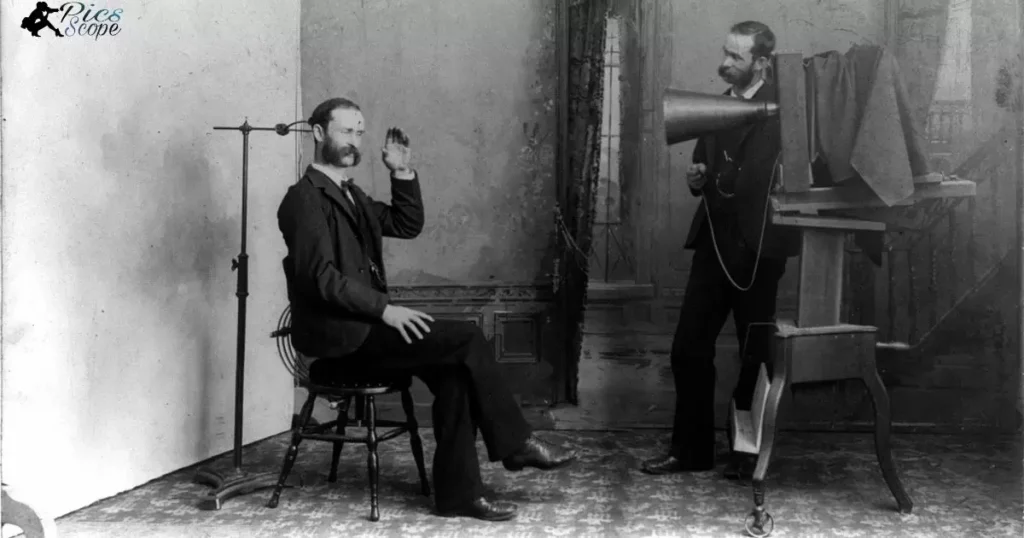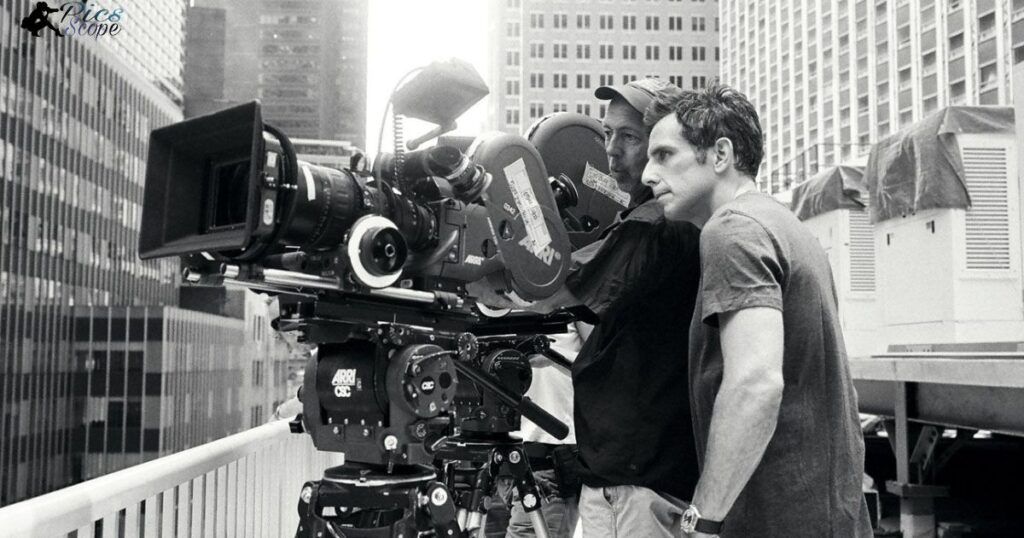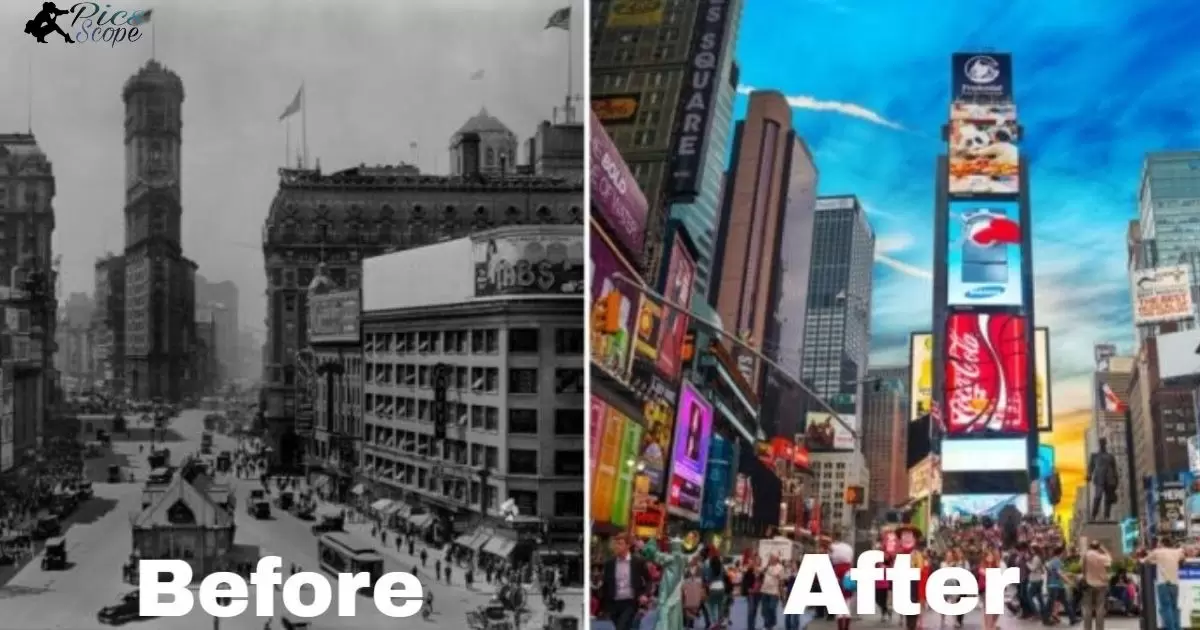Photography has evolved significantly over the years. Initially, cameras used film, requiring careful handling and developing. With technological advancements, digital cameras emerged, simplifying the process and allowing instant image capture.
Explore the evolution of photography through the years. Witness the transformative journey of this art form, from its humble beginnings to the digital age. Join us in unraveling the mysteries of How Has Photography Changed Over Time? Embrace the call to explore the captivating snapshots of history.
Explore the evolution of photography. Early cameras used film rolls, capturing moments in black and white. Today, digital technology brings vibrant, instant snapshots, reshaping how we share and preserve memories. Join us on a journey through the fascinating changes in the world of photography!
When Were Photographs Invented?
Photographs were invented in the early 19th century. The credit for the first successful photograph goes to Joseph Nicéphore Niépce in 1826. Using a camera obscura and a bitumen-coated pewter plate, he captured an image that marked the beginning of photography.
Niépce’s invention paved the way for further developments. Louis Daguerre, in 1839, introduced the daguerreotype process, a more practical and widely adopted method. These early photographic processes laid the foundation for the art and science of photography, changing the way we document and share moments in history.
History Of Digital Photography Timeline
Digital photography has a relatively recent history. In the late 20th century, the first digital cameras emerged, capturing images in pixels. By the early 2000s, consumer-friendly digital cameras became widely accessible, replacing film in many households.
In the early 2000s, the megapixel race took center stage, driving innovations in camera technology. The mid-2000s witnessed the rise of compact digital cameras, making photography more portable. As the years progressed, smartphone cameras became increasingly powerful, democratizing photography and transforming how we document our lives.
How Is Photography Different Today?
Photography today differs significantly from the past. In the digital era, cameras have become more accessible, and smartphones have turned everyone into potential photographers. The ease of sharing photos instantly on social media has transformed how we capture and communicate moments.
Furthermore, advancements in technology have brought about new techniques and styles in photography. High-quality images, sophisticated editing tools, and the rise of influencers have reshaped the art form. In today’s fast-paced world, photography is not just a means of documentation but a dynamic and ever-evolving medium for self-expression and storytelling.
How Has Photography Changed In Terms Of Subject Matter?
Photography has shifted its focus in terms of subject matter over time. Initially, early photographs mainly captured portraits and still lifes. As technology advanced, photographers embraced diverse subjects, ranging from landscapes to abstract concepts, reflecting the evolving interests and perspectives of society.
In recent decades, with the rise of digital photography and social media, there’s been a noticeable change in the types of subjects people choose to capture. Everyday moments, personal experiences, and candid snapshots have become prevalent, reflecting a more spontaneous and inclusive approach to photography
What Is The First Photograph Ever Taken?

The first photograph ever taken dates back to 1826. Joseph Nicéphore Niépce, a French inventor, captured the image using a process called heliography. The photograph, titled View from the Window at Le Gras, depicts a courtyard and buildings, showcasing the humble beginnings of photography.
Niépce’s groundbreaking achievement marked the inception of photographic history. His use of bitumen-coated pewter plates and a lengthy exposure time of around eight hours paved the way for the evolution of photography, setting the stage for the remarkable visual journey that followed.
How Has Technology Changed Photography?
Over time, technology has transformed photography in remarkable ways. In the past, cameras relied on film rolls, capturing limited shots before needing a change. Now, with digital advancements, photographers can take countless high-quality pictures, instantly viewable on screens.
The integration of technology goes beyond the camera itself. Editing tools, once labor-intensive in darkrooms, are now available at our fingertips through software. Social media platforms allow instant sharing, creating a global audience for photographers.
What Were The Early Days Of Photography Like?

In the early days of photography, cameras were big and cumbersome. People had to stay still for a long time to capture a single photograph. Black and white images dominated, showcasing a simpler yet captivating era in visual storytelling.
Photographers used glass plates and chemicals, a far cry from today’s digital ease. The process required patience and skill, revealing a time when capturing moments demanded a meticulous approach. These early days laid the foundation for the diverse and dynamic world of photography we experience today.
What Are The Three Historical Periods Of Photography?
Photography has undergone significant transformations throughout its history, evolving across distinct periods that mark technological and artistic shifts. The table below provides a concise overview of these three historical periods.
| Period | Characteristics |
| Daguerreotype Era | Dominated by the first commercial photography process, daguerreotypes. Images were one-of-a-kind, detailed, and on silver-coated copper plates. (1839-1860s) |
| Film Photography Era | Introduction of film rolls, allowing multiple exposures. Black and white photography prevailed, capturing iconic moments. (Late 19th century – late 20th century) |
| Digital Age of Photography | Emergence of digital cameras and smartphones. Instant, high-quality images, with the rise of social media influencing visual communication. (1990s – present) |
Each period reflects not only technological advancements but also shifts in the way we perceive and share images, shaping the diverse landscape of contemporary photography.
How Did Photography Evolve With Technological Advances?
Photography evolved with technology’s rapid progress. Initially, cameras used bulky film rolls, capturing images in monochrome. Over time, Photography Invention witnessed digital innovations emerging, replacing film with electronic sensors, transforming the way we capture and share moments.
Advancements like autofocus, image stabilization, and high-resolution sensors made photography more accessible. The shift from film to digital not only enhanced image quality but also revolutionized how photographers approach their craft.
In What Ways Did Film Photography Impact The Industry?
Film photography made a significant mark on the industry through its unique characteristics. Photographers worked with physical rolls of film, a tangible medium that required precision and careful handling.
The development and processing of film added an element of anticipation and surprise to the creative process. Waiting for the film to be developed built excitement, contrasting with today’s instant digital results.
In essence, film photography not only shaped the technical aspects of the industry but also influenced the artistic approach, leaving a lasting impact on the way photographers envisioned and captured their subjects.
What Role Did Color Play In Transforming Photography?

Color played a pivotal role in transforming photography. Initially captured in black and white, the introduction of color brought a vibrant dimension to images. This shift allowed photographers to convey emotions, enhance realism, and capture the world in a more nuanced and lifelike manner.
The evolution from monochrome to color photography expanded the expressive potential of the medium. It enabled photographers to document the richness of landscapes, the subtleties of human emotions, and the vibrancy of everyday life.
How Has Digital Photography Revolutionized The Art Form?
Digital photography has transformed the way we capture and share moments. Cameras no longer rely on film; instead, they use sensors to convert light into digital data, allowing for instant viewing and editing. This revolution has democratized photography, making it accessible to anyone with a smartphone or digital camera.
Editing tools and software have become integral, enabling photographers to enhance, manipulate, and share their work effortlessly. The ease of sharing online has created a global community of photographers, fostering inspiration and collaboration.
The Impact Of Social Media On Contemporary Photography
Social media has transformed contemporary Photography Invention Photographers now share their work instantly, reaching a global audience. Platforms like Instagram and Facebook provide a space for creativity, influencing trends and shaping the way we perceive and create visual stories.
The immediacy of social media also challenges traditional norms in Photography Invention. It encourages spontaneity and authenticity, shifting the focus from meticulously curated images to genuine moments. The democratization of Photography Invention on these platforms has empowered individuals to become creators, contributing to a dynamic and ever-evolving visual culture.
Photography In The Smartphone Era
Smartphones have transformed photography, making it accessible to everyone. With built-in high-quality cameras, capturing moments became effortless. The ease of sharing photos instantly through social media has reshaped how we document our lives.
In the smartphone era, photography is no longer confined to professionals. Everyday users can now express themselves through images, contributing to a visual revolution. The convenience and democratization of photography through smartphones have indeed been a game-changer in the way we perceive and engage with visual storytelling.
What Are The Two Important Characteristics Of Photography?
Photography boasts two crucial characteristics. Firstly, it freezes moments in time, capturing the essence of a scene or subject. This characteristic allows for the preservation of memories and the documentation of various aspects of life.
Secondly, photography relies on the play of light and shadow, shaping the visual narrative. This interplay defines the mood and atmosphere in a photograph, making it a powerful tool for storytelling and communication.
Environmental And Ethical Considerations In Modern Photography
In today’s photography landscape, environmental and ethical concerns shape the way we capture moments. Photographers increasingly choose sustainable practices, opting for eco-friendly materials and processes. This shift promotes a consciousness about the environmental impact of photography.
Moreover, ethical considerations extend beyond the environment, influencing how photographers approach subjects. Respecting privacy, obtaining consent, and avoiding exploitation are pivotal in creating a more responsible and mindful photographic practice.
What Could The Future Hold For The Ever-Changing World Of Photography?
Explore the exciting possibilities ahead for photography. Technology continues to advance, offering new tools and techniques. Photographers may experiment with innovative styles, and artificial intelligence might play a larger role in image creation.
Looking forward, accessibility to photography may increase, allowing more people to participate.
With the rise of smartphones and user-friendly cameras, capturing and sharing moments will likely become even more widespread.
What Makes A Good Photograph?
A good photography invention captures a moment with clarity and purpose. Composition plays a crucial role, framing the subject in a way that draws the viewer’s attention. Sharp focus, balanced lighting, and thoughtful use of colors contribute to the overall impact.
Emotion is another key element; a compelling photography invention elicits feelings or tells a story. Whether it’s the play of light on a landscape or the genuine expressions in a portrait, emotion adds depth to the image.
How Have Digital Cameras Changed Over Time In Terms Of Features, Speed And Quality?
- Features: Digital cameras have evolved from basic settings to include advanced features.
- Speed: Early models had slower shutter speeds and autofocus, while modern cameras offer rapid shooting capabilities.
- Quality: Advancements in sensor technology have led to higher resolution and improved low-light performance.
- Overall Transformation: The journey of digital cameras reflects a significant enhancement in features, speed, and image quality over time.
FAQ’s
How Has Photography Changed Over Time?
Photography has transformed through technological advancements, transitioning from film to digital, enhancing features, speed, and overall image quality over time.
How did early cameras differ from modern ones?
Early cameras used film rolls and captured images in black and white, while modern cameras employ electronic sensors for vibrant, instant snapshots.
What role did technology play in reshaping photography?
Technological advancements, such as autofocus and high-resolution sensors, transformed photography, making it more accessible and enhancing image quality.
How has the shift from film to digital impacted the industry?
The transition improved not only the efficiency of capturing images but also revolutionized the approach and techniques employed by photographers.
In what ways has digital innovation affected the accessibility of photography?
Digital innovations have made photography more accessible to a wider audience, allowing people to easily capture and share moments using smartphones and digital cameras.
Conclusion
The journey of How Has Photography Changed Over Time? has been a captivating evolution through time. From the early days of black-and-white film to the contemporary era of instant digital snapshots, photography has adapted and flourished.
The transformation is evident in the enhanced features, speed, and quality of cameras. As technology continues to shape the world of visual storytelling, the future of How Has Photography Changed Over Time? holds exciting possibilities, promising further innovations that will continue to redefine how we capture and immortalize our most cherished moments.







